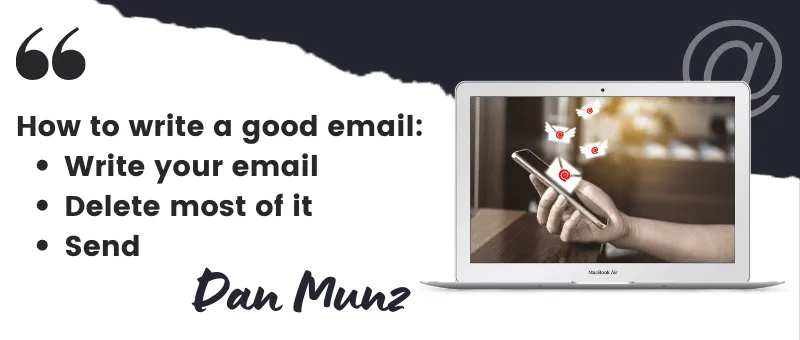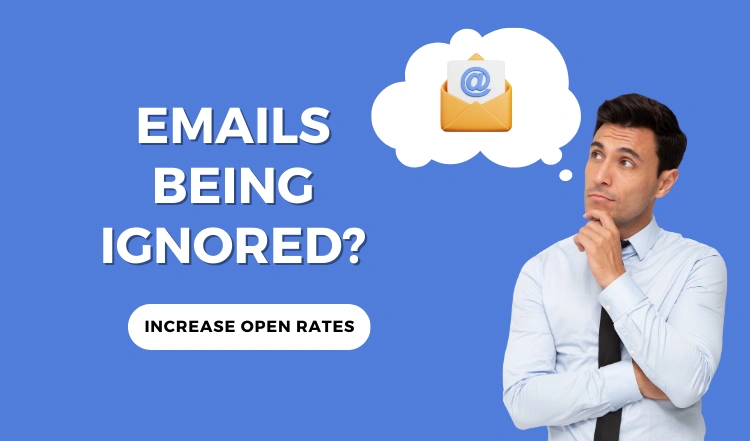It’s one metric we consistently watch and try to improve: email open rates. There’s good reason for it, too. If your subscribers aren’t opening your email, then they can’t read about:
- Your newest coaching program
- Your latest must-have tool discovery
- That epic blog post you just wrote
The trouble is, you only have about two seconds to entice a reader to open your email. Even worse, you have to do it in ten words or less.
Yikes! That’s a pretty tall order, even for seasoned copywriters. But there are some tricks you can use.
Be Ambiguous
If you’ve been on Facebook lately, you’ve no doubt seen those “clickbait” headlines that say things like, “She adds this to a box of Wheat Thins, and I’m drooling!” The reason headlines like that work is because we can’t help but want to know what “this” is that she’s adding to her Wheat Thins. Is it sugar? Salt? Peanut butter? We imagine the possibilities, but in the end we have to find out, so we click.
You can employ the same technique in your email subject lines. Just substitute the word “this” for the actual thing you’re writing about, and you’ve got instant enticement.
Use Numbers
Here’s another strategy for creating must-read content: numbers.
“7 Hidden Benefits of Waking Up at 5am”
“3 Unlikely Ways to Close the Sale”
“5 Social Media Platforms You Shouldn’t Be Ignoring”
The reason numbers work so well in subject lines is because we are egocentric and curious. We simply must know if we already use those three ways to close the sale. We will either walk away feeling good for being a marketing maven, or we will have learned something. Both are compelling reasons to open an email.
Use Power Words
Just as with all writing, choosing power words is far more effective than settling for their weaker counterparts. Imagine these two subject lines appear in your inbox. Which are you more likely to open:
“AkzisVIP Makes Better Looking Online Stores for Non-Designers”
or
“Create a Gorgeous Website—Even if You’re Not a Designer”
While both subjects offer the same information, the first is weak, while the second is far more compelling.
Recommendation Reading: If you’d like to learn more about using power words in your copywriting, click here.
When it comes to email subjects, there are a few more tips to keep in mind if you want to up your open rates:
- Keep it short – no more than 10 words at the very most, and fewer if you can.
- Test everything. Use your autoresponder’s split-testing functionality to see which subject line styles perform best in your market.
- Use personalization, but sparingly. Occasional use of your reader’s first name can be a powerful technique.

Here’s the bottom line: If your subscribers aren’t opening your email, they’re not buying. Paying closer attention to your subject lines is the single most important thing you can do for your email marketing campaigns.
There are some email subject lines that tend to perform well in terms of improving open rates, and some of the highest testing ones include:
Personalized subject lines: Emails with subject lines that include the recipient’s name tend to have higher open rates.
Curiosity-inducing subject lines: Subject lines that pique the reader’s curiosity, such as “You won’t believe what we found out…” or “Are you making this common mistake?” can be effective at improving open rates.
Urgency-inducing subject lines: Creating a sense of urgency in the subject line, such as “Limited time offer” or “Sale ends tonight” can encourage readers to open the email quickly.
Benefit-focused subject lines: Subject lines that clearly and succinctly highlight the benefits or value of the email content, such as “Get more sales with our proven tips” or “Discover the secret to better sleep,” can also be effective at improving open rates.
Question-based subject lines: Asking a question in the subject line, such as “Want to know how to double your revenue?” can intrigue readers and encourage them to open the email to find out the answer.
It’s important to note that the effectiveness of these subject lines can vary depending on the audience and industry. Testing different subject lines and analyzing the results can help determine which ones work best for a particular email campaign.
Important Email Subject Lines Recommendations
Know your audience: Understanding your target audience is crucial when it comes to writing effective email subject lines. You need to know what resonates with them and what their pain points are.
Keep it relevant: Make sure your subject line is relevant to the content of your email. If your subject line promises something and your email fails to deliver, your subscribers will quickly lose trust in you.
Avoid spammy words: Words like “Free,” “Buy Now,” and “Limited Time Offer” are often associated with spam emails and can trigger spam filters. Instead, focus on creating subject lines that are informative, intriguing, and engaging.
Use emojis: Emojis can help your subject line stand out in a crowded inbox, and can also convey emotion and tone. However, use them sparingly and make sure they are relevant to your content.
Create a sense of urgency: Creating a sense of urgency in your subject line can motivate subscribers to open your email. Phrases like “Last Chance,” “Limited Time,” and “Act Now” can help create a sense of urgency.
Industry Insider Tips Backed by Data
Personalization: According to a study by Experian, personalized subject lines can increase open rates by 29.3%. One way to personalize your subject lines is to include the recipient’s name, but you can also tailor the content of the email to their interests or preferences.
Segmentation: Segmenting your email list based on demographics, behavior, or other factors can also improve open rates. For example, a case study by HubSpot found that segmenting their list based on the recipient’s engagement level with their brand led to a 60% increase in open rates.
Timing: The time of day and day of the week that you send your emails can also impact open rates. According to a study by CoSchedule, the best time to send emails is between 10am-12pm and 2pm-4pm, and the best day of the week is Tuesday.
A/B testing: Conducting A/B testing on different subject lines, email formats, or other elements can help you determine what resonates best with your audience. For example, a case study by Campaign Monitor found that adding emojis to the subject line increased open rates by 56%.
Incentives: Offering a special incentive, such as a discount or freebie, can also improve open rates. According to a case study by ConversionXL, offering a free e-book in the subject line led to a 27.3% increase in open rates.
By implementing these tips along with the strategies mentioned in the article, you can create email subject lines that grab your subscribers’ attention and encourage them to open and engage with your content.





